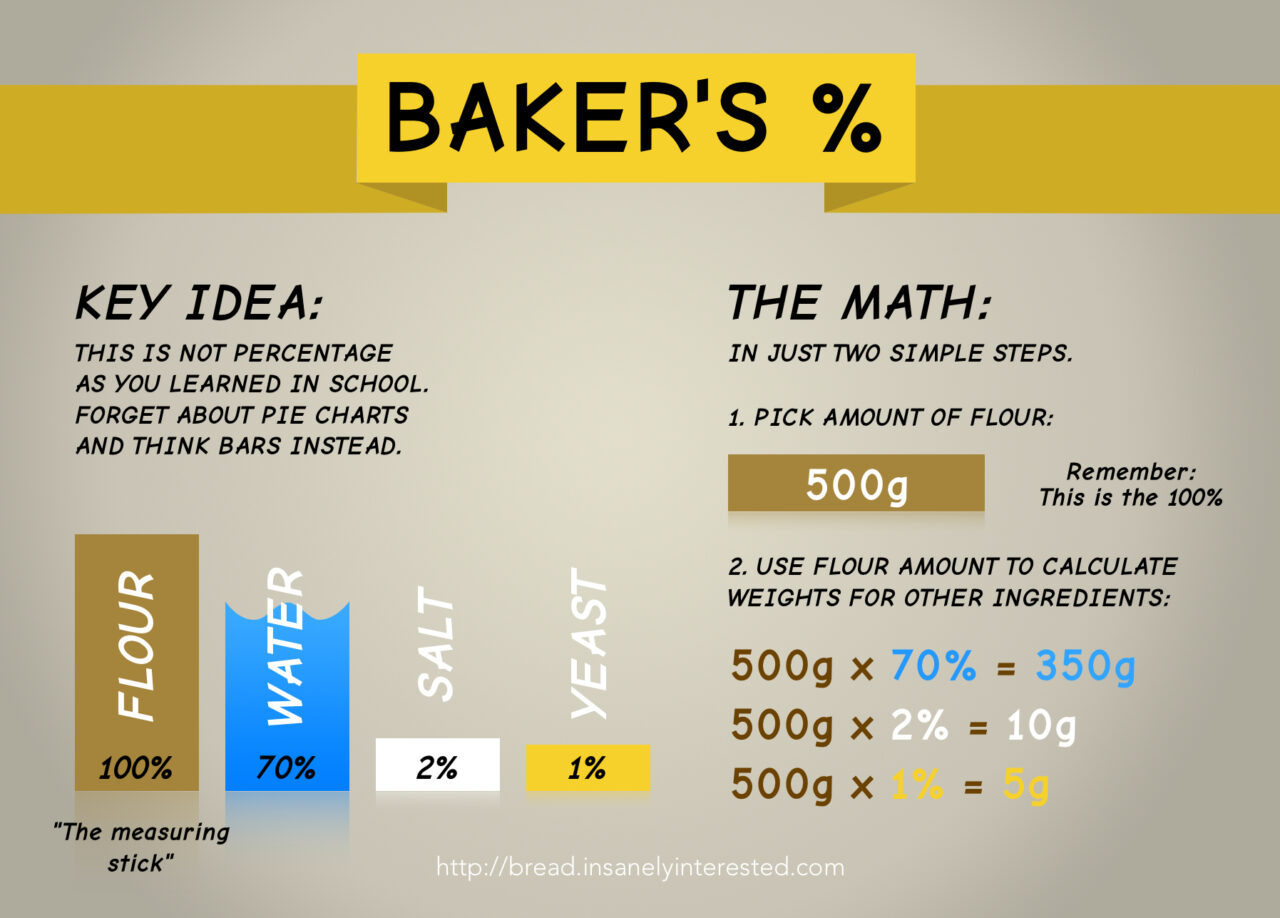Math for Bakers
Writing about bread making, I have found that there are many people who are intimidated by the math involved in the craft. This is why this week, I finally decided to tackle the topic once and for good – while keeping the explanation light on words so that I won’t confuse you any further.
The Baker’s Percentage Cheat Card
When I say “math for bakers”, what it really means is this: baker’s percentage.
If hearing the word percentage scares you, you are not alone – which is a shame, as actually the word not only misrepresents the concept, but also scares many aspiring bread makers from giving the method a try.
To explain the idea at a glance, I have created this small infographic. I hope you’ll find it useful:
When I showed the card above to my brother, he suggested changing the word “percentage” into “fraction.” I don’t know if that would make it sound any less like math, but what it could do is make it clear that when speaking of baker’s percentage, we are not talking of those pie charts where 100% is the full pie – or in our case, the entire bread dough – and each ingredient is a slice of that whole.
Rather than seeing 100% as the entire dough, when dealing with this concept of math for bakers, 100% is the measuring stick to which everything else is compared: flour.
In baker’s percentage calculations, all ingredients are presented in comparison to the weight of the flour in the dough.
For example, if the amount for some ingredient is expressed as 50%, you compare it to the flour and see that you need half the weight of flour of this ingredient.
Experiment Yourself
Modern technology gives us handy tools to work with formulas and learning new ideas. One such tool is BreadStorm, an application for storing and converting bread formulas, developed by a passionate couple of amateur bakers Dado and Jacqueline Colussi.
To give you a chance to experiment with the baker’s percentage calculations from above, here is a simple recipe which I have exported to BreadStorm’s interactive formula format. Try scaling the formula to different flour weights and see how that affects the other ingredients in the recipe:
Ask Questions
If you still have questions about math, let me know. I will do my best to answer all of them and then, if I see that some of the questions should be addressed in the infographic, I will update it accordingly.
Finally and most importantly, don’t let the math keep you from baking. Things like baker’s percentage can be handy tools, but that’s all they really are: tools. You can use tools to make your bread making process more reliable, but if a tool is not working for you, don’t force it. You can still make great bread without it.
